High quality ceramics are also artwork and are respected as such. Recovery really matters. Our wonderful canvass art lasts, depending of ingredients, for centuries and potentially for thousands of years. Look at the two thousand year old Shroud of Turin and please do not repeat the nonsense it is from the middle ages.
Ceramic art if it is protected can obviously last for tens of thousands of years. Been able to recover choice pieces like this is so worthwhile.
We are now entering the GOLDEN AGE known as HEAVEN ON EARTH and we want to preserve great art and ceramics will be a natural part of all that. Fixing broken pieces like this is a blessing and it will be global.
Japanese Artists Use Gold to Revive Broken Ceramics in Zen-Inspired Technique, Say Breakage Adds Beauty
(Marco Montalti/Shutterstock)
BY MICHAEL WING TIMEJANUARY 18, 2023 PRINT
Japanese Zen philosophy has inspired a culture that finds beauty in imperfection. This idea is found in the crack of a teacup in the art of kintsugi.
Where we Westerners might consider it broken and useless, the Japanese pieced together such broken ceramics using lacquer and then sprinkled the joints with powdered gold to decorate—and indeed celebrate—the flaw.
This emphasis on the so-called “broken” part embellishes the history of the object’s life. It is the richness of this history that enhances and beautifies, thus allowing a “broken” object to be reborn.
An example of a porcelain cup fixed using kintsugi. (Marco Montalti/Shutterstock)
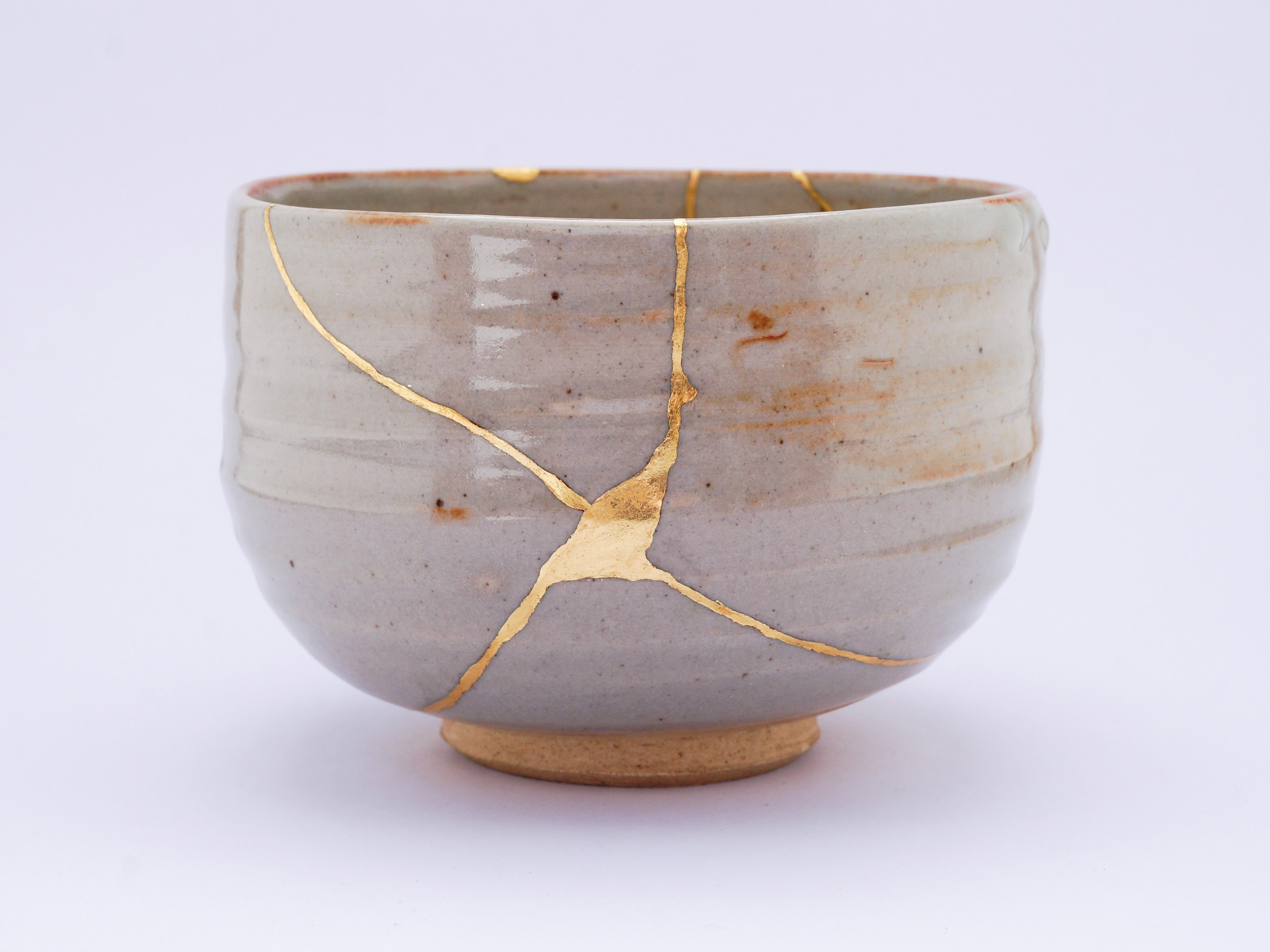 The simple and rusticated ceramics in Japanese traditional culture stem from Zen Buddhism, which was introduced in Japan in the 12th century. (Marco Montalti/Shutterstock)
The simple and rusticated ceramics in Japanese traditional culture stem from Zen Buddhism, which was introduced in Japan in the 12th century. (Marco Montalti/Shutterstock)This art form differs from Western ideas and it stems from the Japanese principle of wabi-sabi, which encourages us to discover charm and blessings in the unseemliest and most desolate of places.
The philosophy germinated with the introduction of Zen Buddhism in Japan from China in the late 12th century. It found expression in the Japanese tea ceremony where lavishness was soon replaced by the simple and rustic.
Detail of a cup fixed using kintsugi. (Marco Montalti/Shutterstock)
(Left) A portrait of Shōgun Ashikaga Yoshimasa. (Public Domain); (Right) A vessel that was fixed using kintsugi. (Lia_t/Shutterstock)
Kintsugi is believed to have originated when Shōgun Ashikaga Yoshimasa sent a broken porcelain tea bowl to China to be repaired. It came back mended with metal staples which Ashikaga Yoshimasa found unsightly. He ordered artisans to devise a more aesthetic solution, and thus kintsugi was born.
The process itself is simple. Stemming from the time-honored artform of Japanese lacquerware, dating back to prehistory, the technique uses lacquer extracted from the indigenous urushi tree combined with bonding mediums, such as flour or rice, as a glue to join broken pottery pieces together. It is applied to the pottery using a fine brush. The artisans then placed them in humidified storage compartments, called furo, for anywhere from two days to two weeks. Bowls of hot water placed inside the furo increase the humidity which is absorbed by the lacquer, helping it to dry more quickly.
A work of kintsugi applied to a teacup. (Marco Montalti/Shutterstock)
Kintsugi found expression in the Japanese tea ceremony. (Lia_t/Shutterstock)
Once the piece has set, a layer of powdered gold is sprinkled over the crack, embellishing it with precious metal. From start to finish, the process can take as long as three months to complete.
Typically, kintsugi is used to mend cherished family items; on a group of islands fraught with earthquakes, broken pottery is something to be expected.
Kintsugi applied to a china plate. (Marco Montalti/Shutterstock)
A rustic vessel with the technique of kintsugi applied on it. (Marco Montalti/Shutterstock)
It is said that the art of kintsugi became so popular that some pottery collectors were accused of smashing pieces intentionally to have them rejoined using this method. It is also possible that defective or deformed pottery pieces were broken and re-mended in this way, salvaging them from being tossed away.
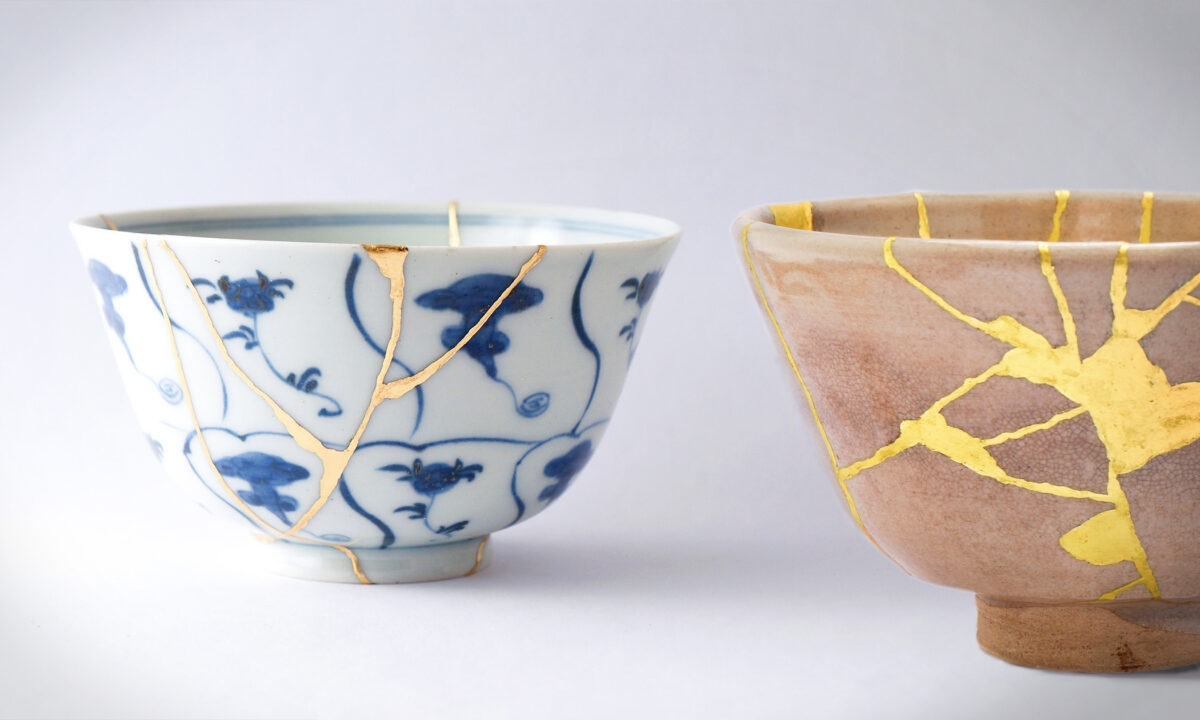
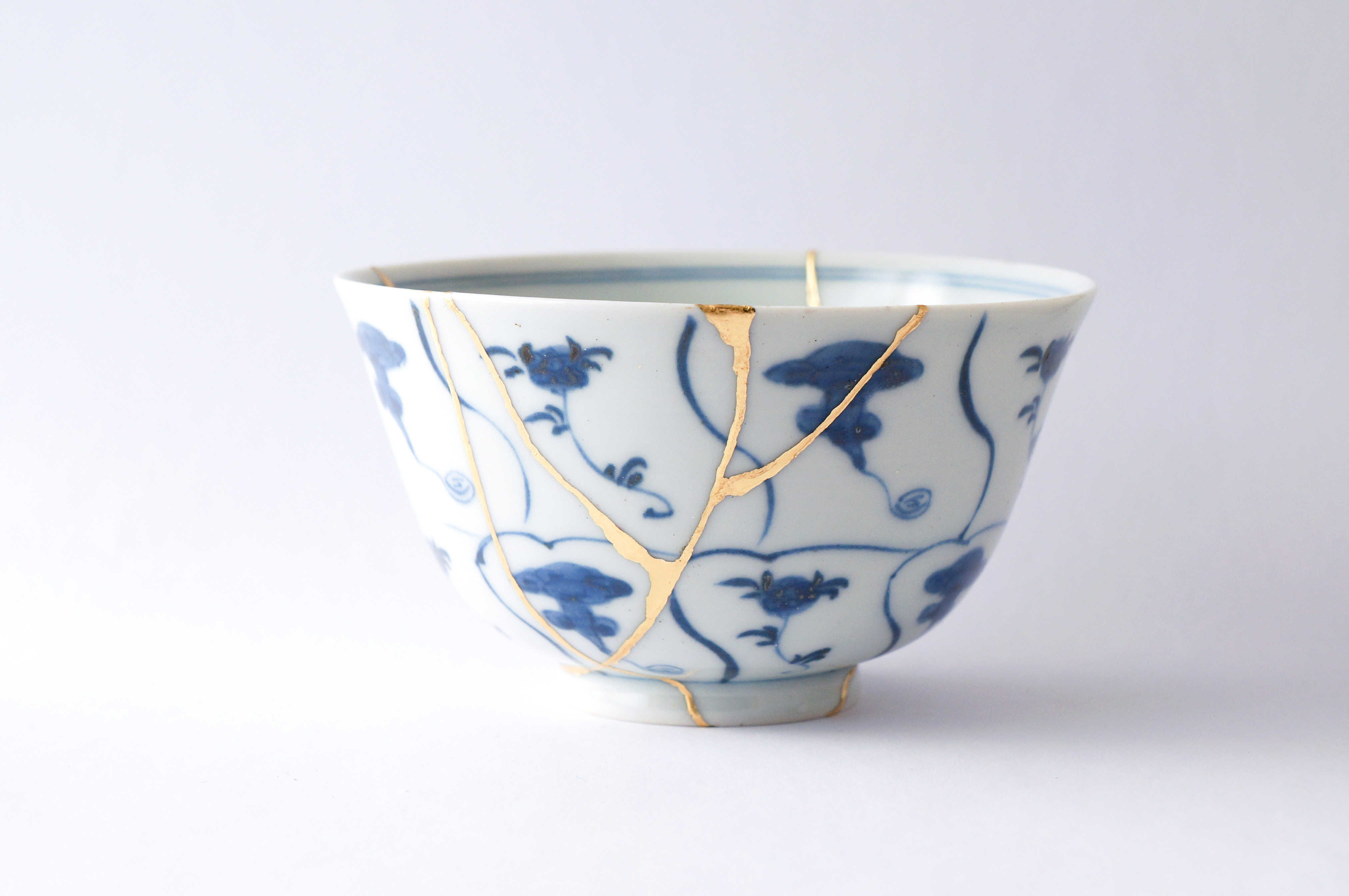
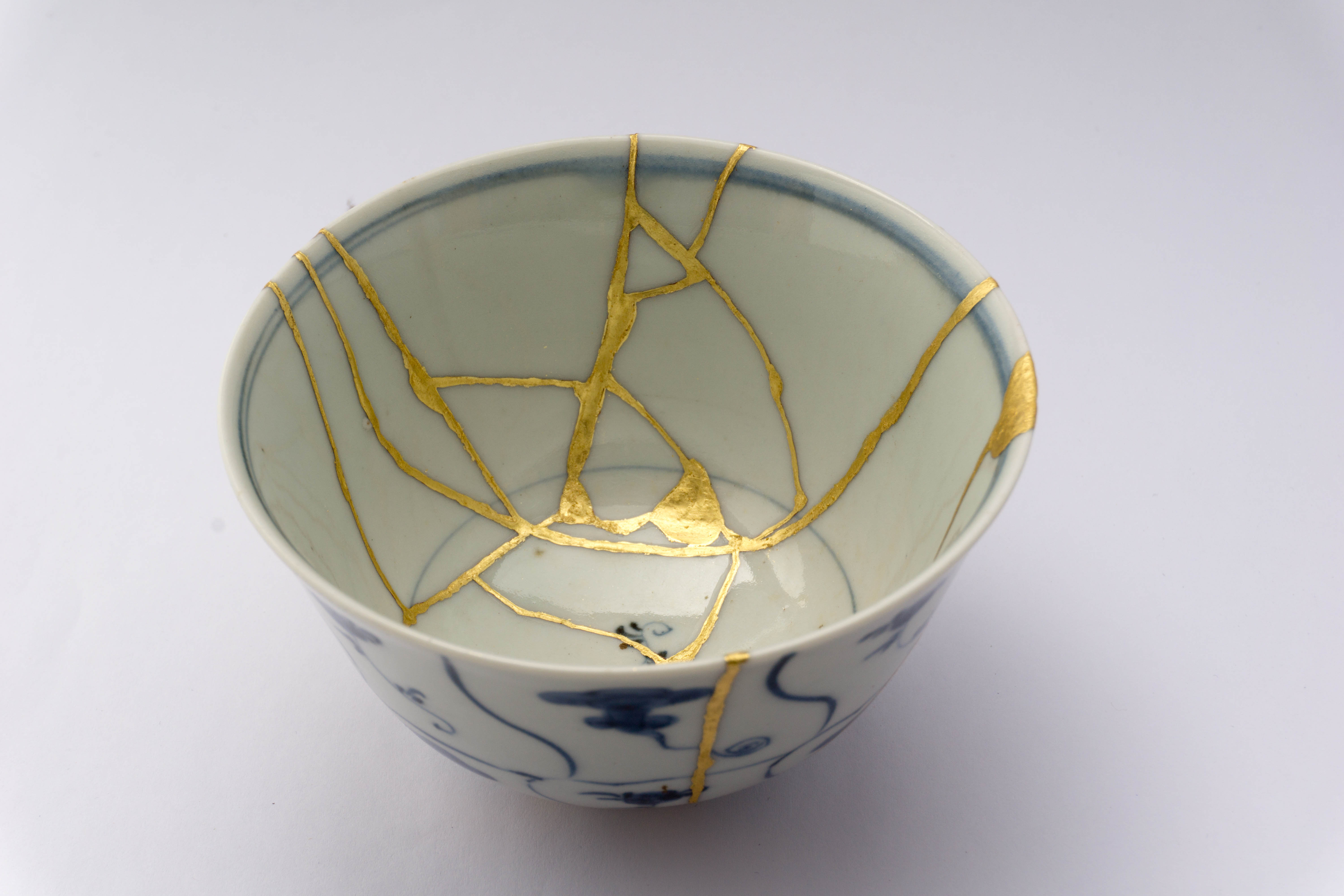
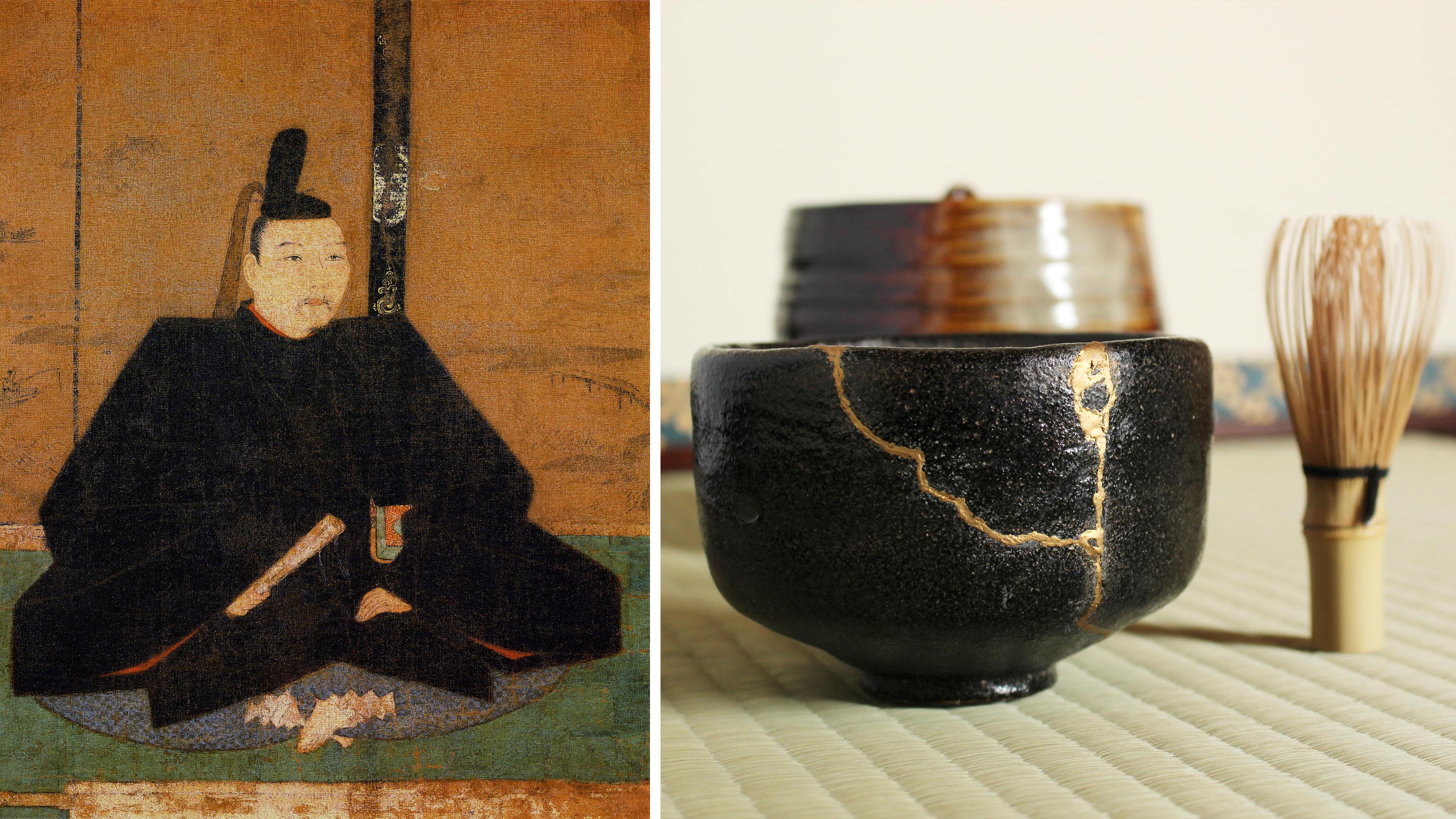
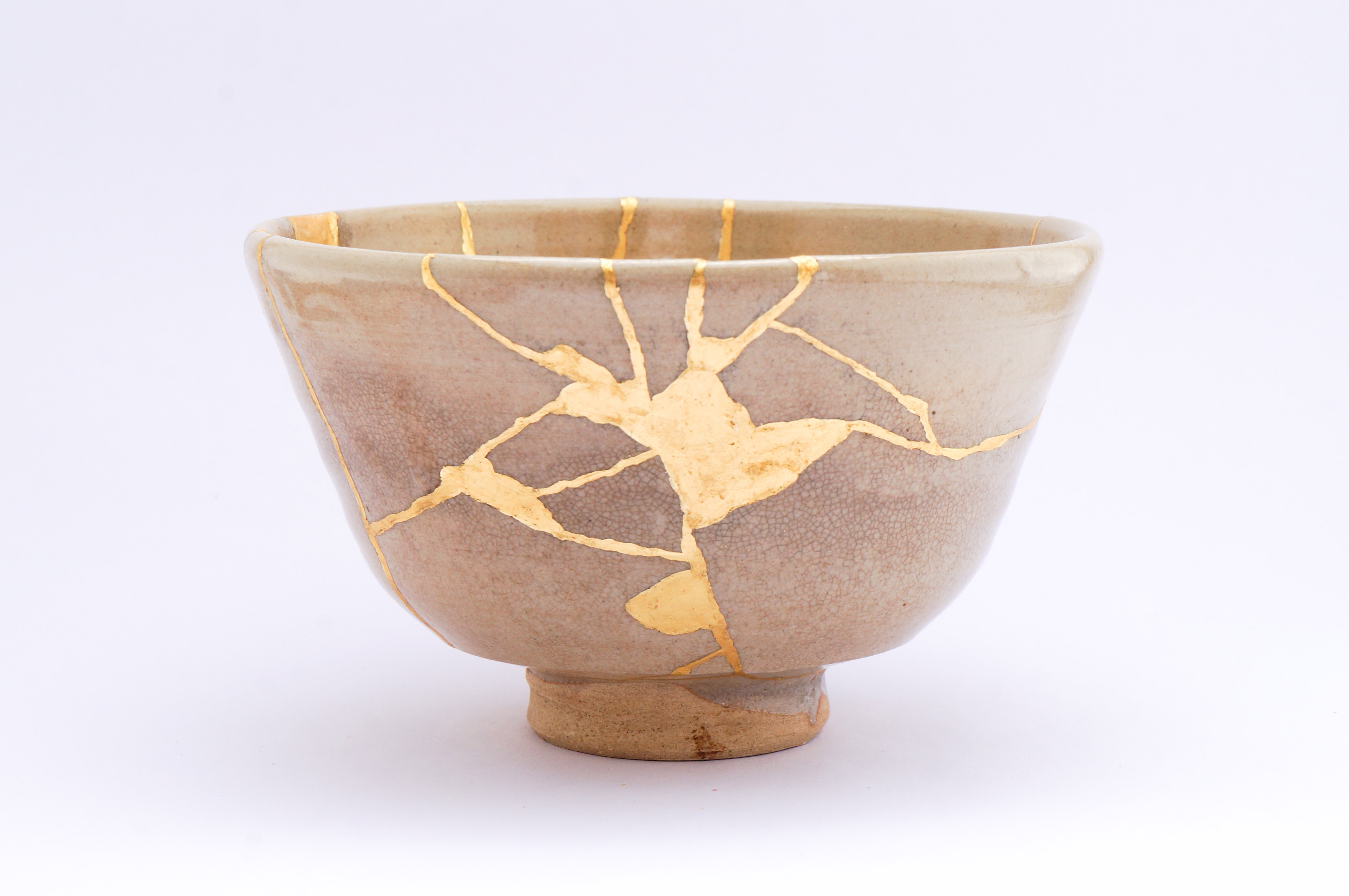
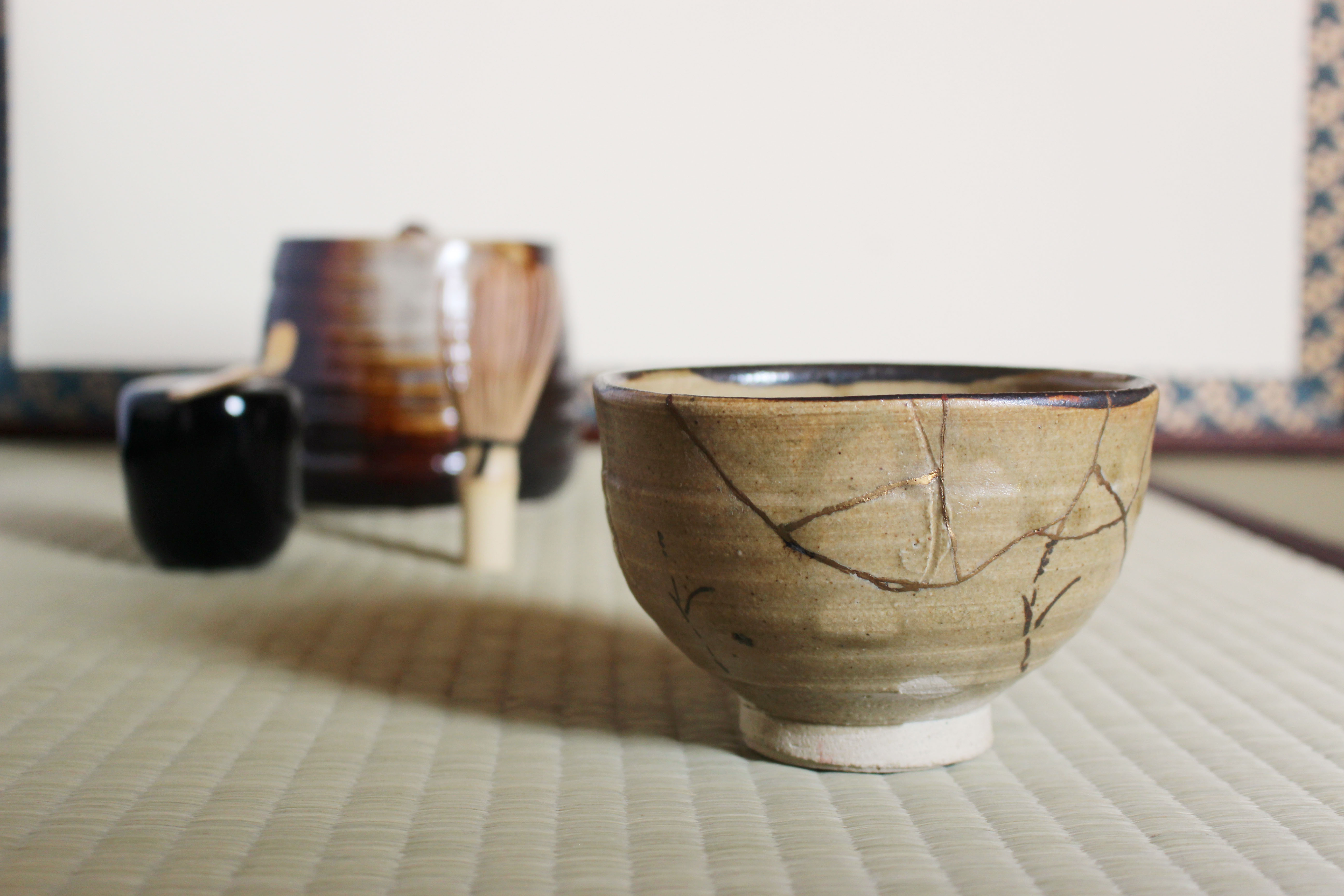
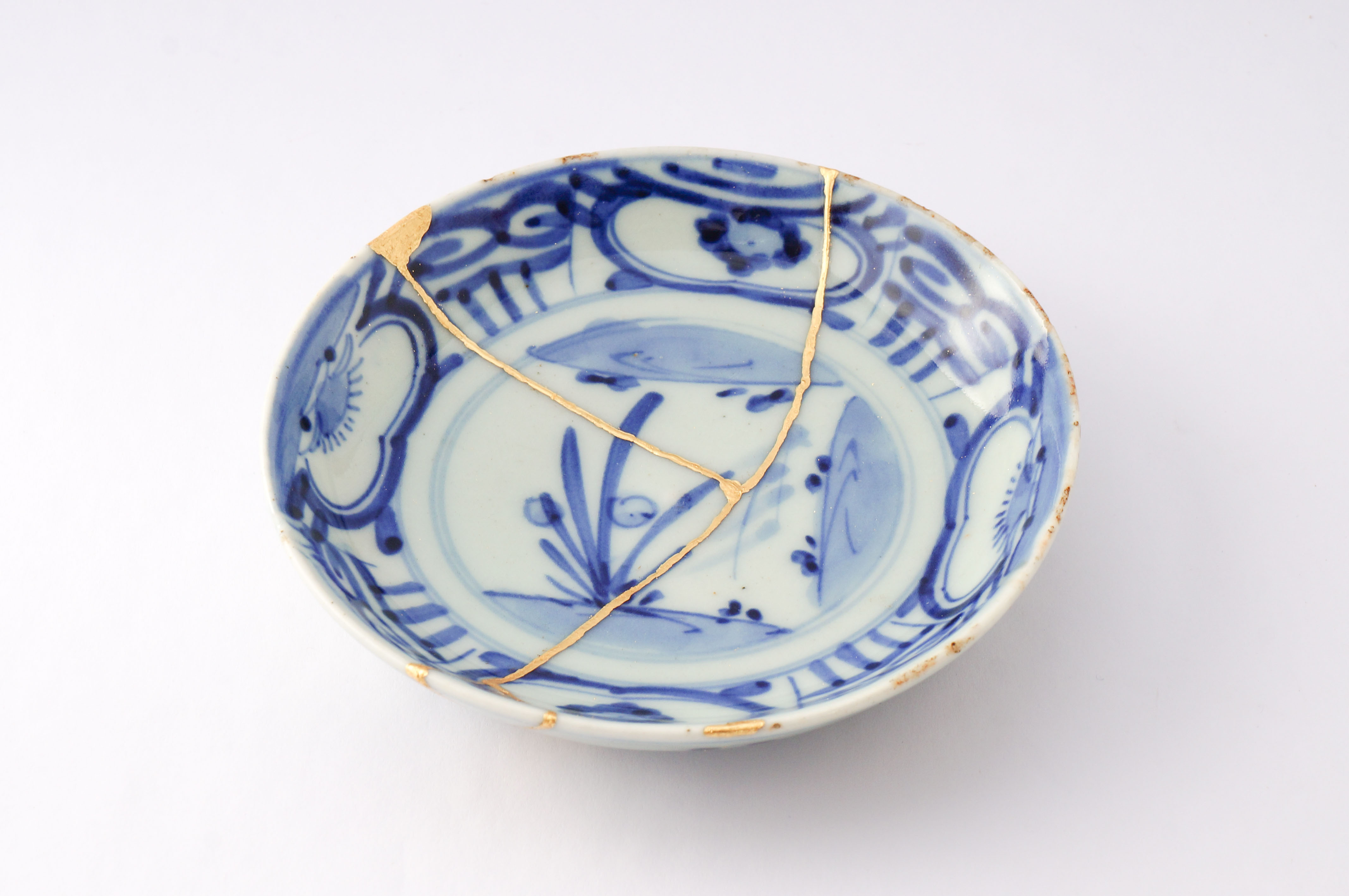

No comments:
Post a Comment